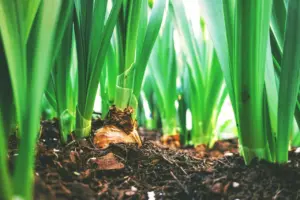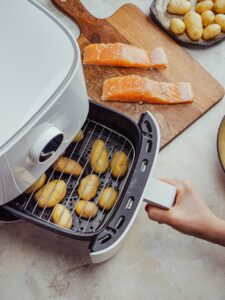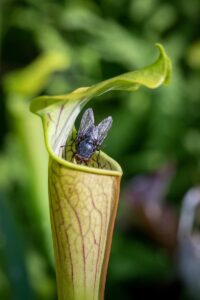
The Best Time Of Year To Plant Spring Bulbs
The Timing Is Everything It is important to plan ahead when planting bulbs. Spring-flowering bulbs should be planted in the fall to ensure that they
If you have been following the progress of my husband’s strip canoe, I’m happy to report that this is our 2nd to last post! The seats are being constructed and after they are installed, the canoe will be complete! I can’t wait to show you the finished canoe!
Table of Contents
Toggle
Following the recommendation in the Building A Strip Canoe book, Mr. Hobby is constructing the seats by using plastic cane to weave the seat. Plastic cane, as opposed to a natural cane, is used because it is more durable for outdoor applications.
After two frames were built, holes were drilled for the weaving. Wooden pegs help to hold the cane tightly in place during the weaving.
Cane is first weaved from top to bottom, and then side to side, and eventually vertically.
Mr. Hobby reports that weaving the cane is a tedious process, but the end result should be a strong seat that will withstand the elements, especially water.
I am trying my hand at this cane weaving and I’m working on the 2nd seat. I think I should have read the instructions in the book before I started . . . I’m almost embarrassed to say that I spent quite a bit of time pulling out rows because I made a mistake.
Mr. Hobby also made and installed the yoke. The yoke will help Mr. Hobby carry the canoe on his own.
The gunnels turned out great!
The seat pictured above still needs to be attached, it is just set in place right now. A 2nd seat will be added to the front of the canoe.
We are getting excited for the maiden voyage!
If you enjoyed this project, we’d love if you’d pin it to share! Thank you!

The Timing Is Everything It is important to plan ahead when planting bulbs. Spring-flowering bulbs should be planted in the fall to ensure that they

Many of our yards have serious under-bulbing – for a variety of reasons. A rabbit searching for a free meal in the garden. One is

How to Use the Color Wheel to Pick the Right Palette for Any Room When picking paint colors, one of the most common concerns is

The Best Air Fryers With Large Capacity For 2023: Reviews Are you looking for healthier ways to feed your family? Are they fried food lovers,

Here is our list of the most popular American house styles. It can be difficult to choose your favorite house style in a world of

What Is A Carnivorous Plant And How Do They Work? Carnivorous plants that “digest” insects for their nutrients – particularly nitrogen – include many species,